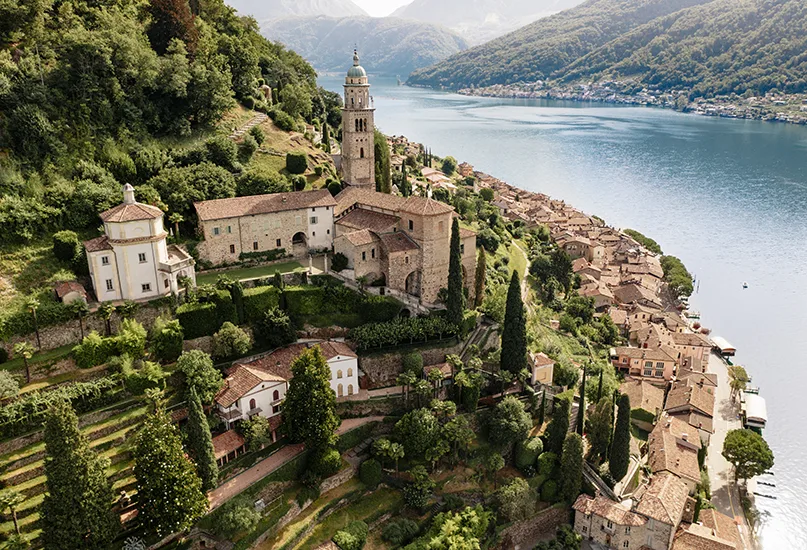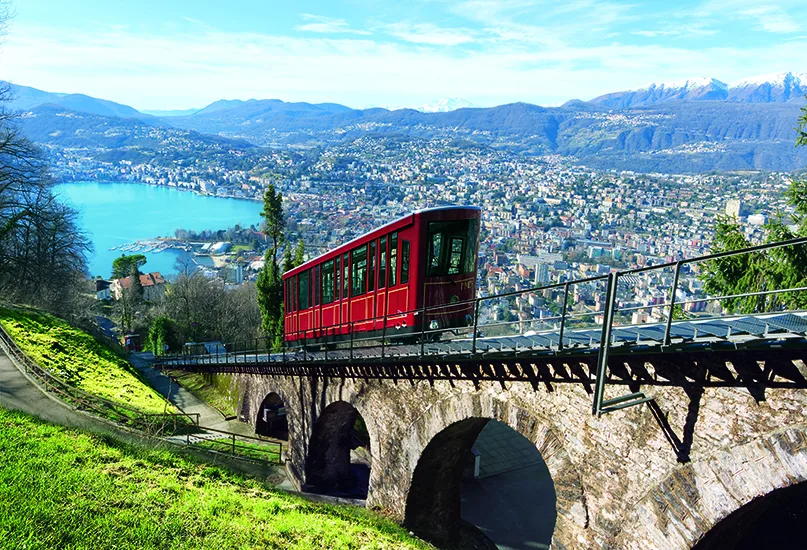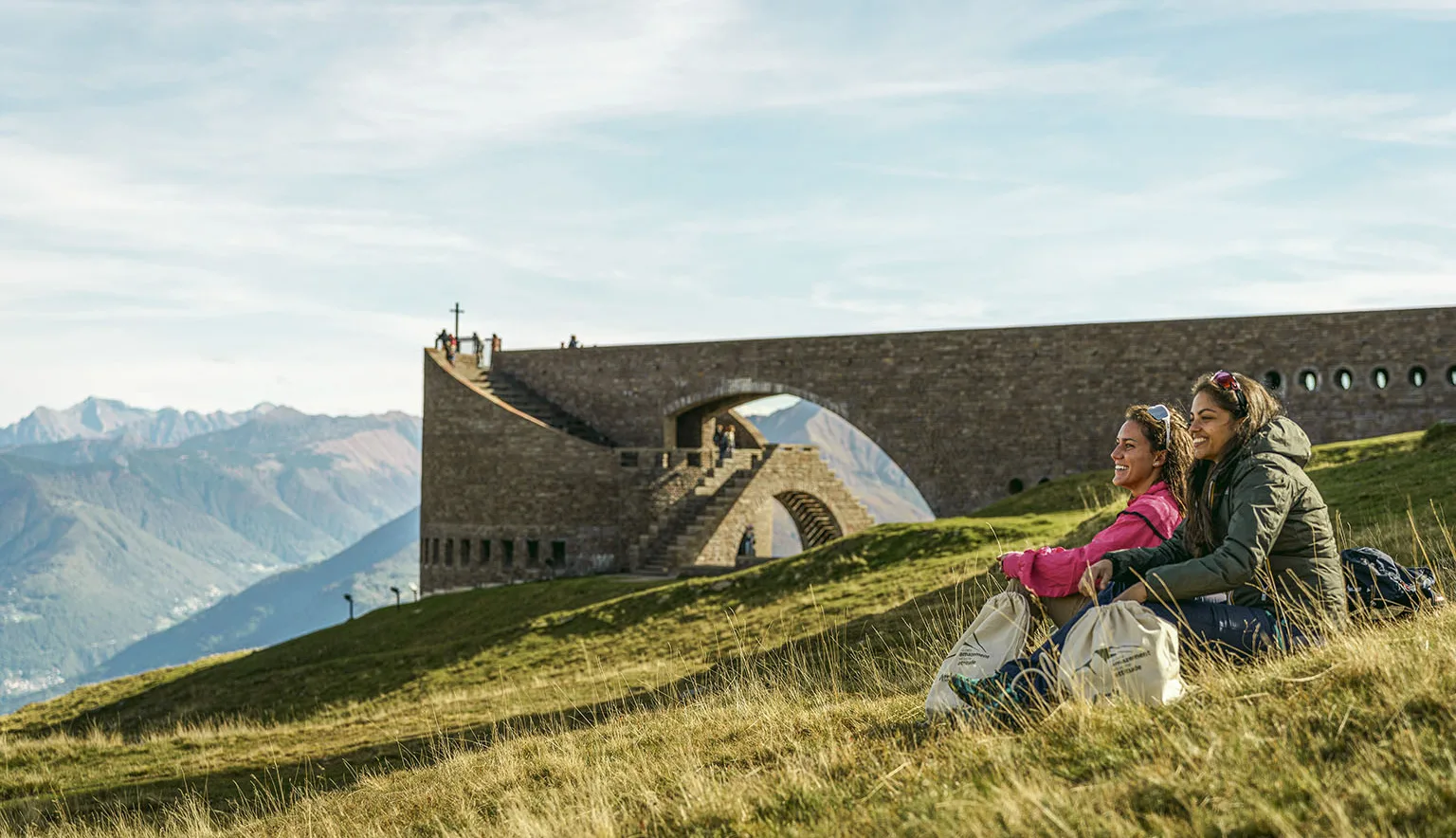We speak to Massimo Boni, Director of Lugano Region, about the organisation’s new initiatives, exciting future plans, and the area’s unmissable and undeniable appeal.
Q&A WITH LUGANO REGION
Firstly, can you talk us through the origins of Lugano Region and its vision?
Massimo Boni, Director (MB): Lugano Region has its roots in over 130 years of history, beginning with the founding of “Pro Lugano,” the city’s first tourism organisation.
Since then, our institution has evolved to comply with the new tourism law introduced in 2014. The Ente Turistico del Luganese is one of the four regional tourism organisations (RTOs) in the Canton of Ticino and is a public law corporation. Lugano Region is the brand name under which we present ourselves to the public.
Lugano Region’s mission is to enhance the value of the territory and welcome visitors. As a destination, we aim to become the leading point of reference in Southern Switzerland in three strategic areas – Sports and Nature, Art and Culture, and Food and Wine. Our goal is to offer a complete, authentic, and innovative tourism experience, designed for the traveller of tomorrow.
What are the current goals for Lugano Region as a Destination Marketing Organisation (DMO)?
MB: With a team of over 50 staff members, Lugano Region is responsible for promoting and marketing the tourist offering, developing tailormade experiences for visitors that highlight the region’s assets, providing tourist assistance and information, maintaining the regional network of hiking and mountain biking trails, funding events, and managing tourist taxes.

How do you market the Lugano region as a destination?
MB: The promotion of the destination is based on a well-structured and comprehensive strategy implemented across our target markets. These consist of a balanced mix between the Swiss domestic market – which accounts for around 50 percent of our overnight stays – and international short and long-haul markets.
From a strategic perspective, several operational areas within the RTO contribute to this approach. The “Destination and Product Development” department is responsible for identifying new opportunities to expand and enhance the tourism offering, working closely with local partners.
The “Brand” department manages the visual identity and positioning of the Lugano Region, ensuring consistency and recognisability of the tourism product. Lastly, the “Marketing” and “Communication” departments are tasked with promoting and communicating the destination across strategic markets and towards key target audiences.
Our strategy focuses on developing integrated offerings that actively engage local stakeholders with the goal of delivering authentic, sustainable, and all-encompassing experiences. This approach allows us to showcase local excellence and respond precisely to the needs and expectations of today’s travellers.
How do you promote off-season travel?
MB: One of Lugano Region’s strategic milestones is the de-seasonalisation of the tourist offering. The goal is to make the destination attractive year-round, ensuring more consistent tourist arrivals throughout the year.
For several years, we have been actively working in this direction, on the one hand by promoting cross-seasonal experiences that encourage visitors to explore the region beyond the traditional peak periods and on the other by fostering new synergies at both territorial and sectoral levels.
Are there any interesting projects in the pipeline you wish to highlight?
MB: One of Lugano Region’s priority projects is the development and promotion of mountain bike and gravel bike trails and resources, which retains a strong appeal for a specialised and passionate audience.
At the same time, Lugano Region aims to strengthen its attractiveness to families by actively collaborating with local operators to design and implement tailored experiences that meet the needs of this target group.

Why, in your opinion, should someone visit the Lugano region?
MB: Lugano is the ideal destination for those seeking an authentic and diverse experience. Its mild climate makes it appealing year-round, and its central location in the heart of Europe ensures easy access from both the north and south.
The region boasts spectacular landscapes and a wide range of outdoor activities including over 900 kilometres (km) of hiking trails, 400km of mountain biking routes, four scenic peaks with cable cars, and the enchanting Lake Lugano, which is dotted with picturesque villages.
Art and culture lovers will also find plenty to enjoy, from LAC Lugano Arte e Cultura, a modern cultural hub hosting internationally acclaimed events, to numerous museums ranging from contemporary art at the Museo d’Arte della Svizzera italiana (MASI Lugano) to the literary charm of the Hermann Hesse Museum in Montagnola.
Finally, the local food and wine scene is sure to delight every palate. From traditional grotti, nestled in nature and perfect for tasting regional specialties in a warm, rustic setting, to gourmet dining at Michelin-starred and Gault Millau-awarded restaurants, where local cuisine is reimagined with contemporary flair and finesse.
Completing this sensory journey are the many local wineries offering tastings of the region’s renowned Ticino Merlot.
What are some of the region’s most unique landmarks?
MB: The Lugano region stands out for offering a wide variety of experiences within a relatively small area, combining nature, sports, culture, and gastronomy in a unique way.
Swissminiatur is a fascinating open-air museum opened in 1959, featuring over 128 famous Swiss buildings and monuments scaled at 1:25. Amongst miniature trains, cable cars, boats, and highways, you can take a journey across Switzerland in less than an hour.
To the north of the region, Monte Tamaro and Splash and Spa offer the perfect blend of adventure and relaxation for the whole family,including scenic hikes, ziplines, mountaintop playgrounds, and at the end of the day, water slides, thermal pools, and wellness areas.
Whilst in the Malcantone and Capriasca sub-regions, in addition to numerous hiking trails through nature, hills, and picturesque villages, you’ll find incredible vineyards where you can taste the excellent Ticino Merlot, as well as local farms producing cheeses, cured meats, and honey.

“Lugano Region must continuously renew its offerings and invest in innovation, service quality, and the promotion of its unique identity and strengths”
Massimo Boni, Director, Lugano Region
What trends are transforming the tourism industry in the Lugano region and how are you utilising them?
MB: One of the main trends transforming tourism is the shift in how visitors access and consume information. To respond to this evolution, we inaugurated our new Info Point a year ago, built around the concept of hospitality and information with an integrated and highly digital approach.
In addition to traditional tools, tourist information in the region is now accessible through constantly updated online platforms and interactive tools. These allow visitors to quickly, intuitively, and personally access relevant content both during the trip planning phase and throughout their stay.
Finally, what challenges does the tourist industry in the Lugano region face?
MB: Like other destinations, we face a range of complex challenges, many of which are linked to external economic and geopolitical factors that can significantly affect international mobility and travel behaviour.
In this context, one of our strategic priorities is the diversification of our target markets, with the goal of building a balanced portfolio between the domestic market – which remains our primary source – and short and long-haul international markets. This approach allows for a more even distribution of tourist flows over time and across the territory, reducing dependence on individual markets.
Additionally, the global tourism sector is becoming increasingly competitive, driven by greater accessibility and the widespread availability of information for travellers. To remain attractive, Lugano Region must continuously renew its offerings and invest in innovation, service quality, and the promotion of its unique identity and strengths.




























